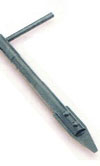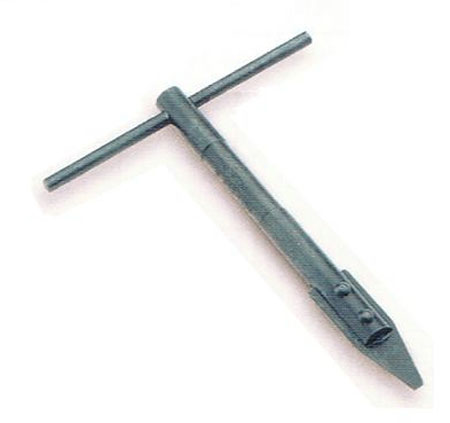Thread Inserts (2)
 In the previous article on thread inserts, Wayne Ward briefly discussed some of the reasons why people might choose to specify a thread insert and looked in a little detail on one of the types of insert which find common use in current racing engines. There is one further reason why a wire insert may be an advantage and that is in improving the fatigue life of the bolt installed therein, or of the female threaded component.
In the previous article on thread inserts, Wayne Ward briefly discussed some of the reasons why people might choose to specify a thread insert and looked in a little detail on one of the types of insert which find common use in current racing engines. There is one further reason why a wire insert may be an advantage and that is in improving the fatigue life of the bolt installed therein, or of the female threaded component.
Previous articles that I have written on the subject of fasteners have talked of the influence that the effective stiffness of the female thread has on the distribution of load within the fastener. There are plenty of references to load distribution in threaded fasteners in textbooks and the reader would be well advised to make himself / herself familiar with this, especially if you have the task of designing some or all of the components which make up a bolted joint. To recap, the majority of the load taken by the female thread is concentrated on the first few engaged threads, irrespective of the total length of thread engagement. The effect of this is to increase the stress concentration on the bolt or stud.
Specifically, we should understand that a more flexible female thread offers a more even load distribution. This can be achieved through using a female thread with a lower modulus of elasticity (the measure of the stiffness of a material) than the male threaded component, or by other design features applied to the female thread. However, it is quite often impossible to change the material of the female thread for various reasons.
The wire insert has an inherent flexibility which can, in some circumstances, serve to mitigate the stress concentration due to load distribution in the bolted joint, thus improving the fatigue life of the components in question. Hopefully you won't find yourself in the situation where you have fatigue problems concerning bolts, studs or expensive castings, but the wire insert is a solution to bear in mind for certain applications. However, if you are thinking of using wire inserts for this reason, you should be sure that it will achieve the intended effect, i.e. to make the female thread more flexible. There are situations where taking the step of fitting a wire thread insert could actually make things worse from this point of view. An example of this might be where the female thread is already suitably flexible and that it is some aspect of the bolt design or its material mean that its fatigue strength is marginal. Here, the addition of a wire insert may serve to stiffen the female thread and increase the stress concentration, thus hastening the fatigue failure.

Moving away from the idea of using a wire insert to change fatigue behaviour, a further advantage of the wire insert is the ability to 'renew' the female thread as required in case of damage. There are several ways to remove a wire thread insert, including special tools specifically designed for the task, one of which is shown in the accompanying picture. Providing that the thread into which the insert is fitted remains in good condition, you can fit a new wire insert, thus renewing the thread.
Fig. 1 - Special tool for removing wire thread inserts
Written by Wayne Ward